In 2013 I had the privilege of working at Broadford Primary School in Romford. The school had put a lot of effort into developing its school grounds. An outdoor music area had been installed and I really liked what I saw.
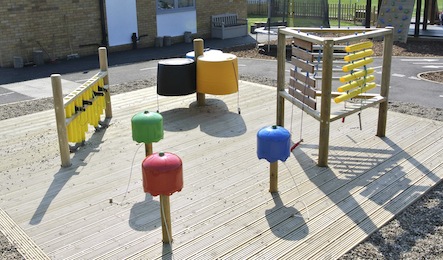
©Saul and The Junk Orchestra
Fixed musical instruments outside sometimes look a little neglected and schools can bemoan the cost versus the amount they are used. As usual, it seems to be the small scale, local business, bespoke designs that come out on top as the winners here, providing options that work well in the space and a level of service that cannot be matched.
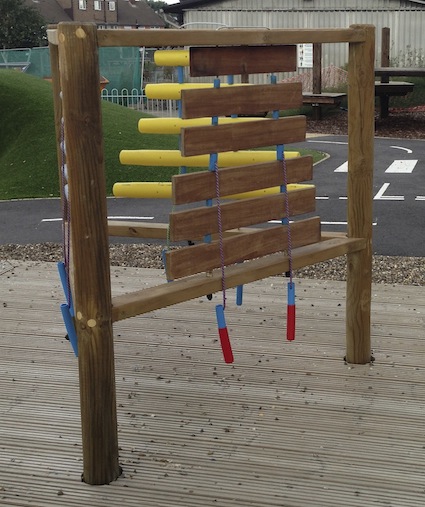
Thus I was not surprised to learn that this music area had been installed by Saul, the founder of The Junk Orchestra. It took some deliberation, deciding to put the instruments together in one place. Some schools go for a line of instruments. Others may scatter them through an outdoor space. However, there is room for ten to twelve children to use these instruments simultaneously. When they are all played freely together, the noise is fairly harmonious as the instruments sound good together.
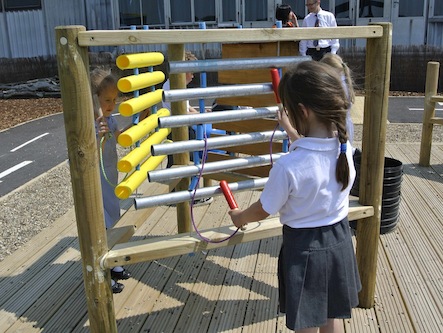
©Saul and The Junk Orchestra
Putting the instruments together in a collective platform has a couple of advantages. Firstly, although there is not enough instruments for every child in a class of thirty to play, it is plenty for a group of preschool children. Additional portable instruments can be added so a primary class can use this area too. Second, the area is a key feature within the space. It is clear that this area is valued by the children and school. The instruments are staring at you. They are in your face. They asking for you to engage and play with them. They have been situated in an area that both the nursery and primary classes can access.

©Saul and The Junk Orchestra
When I went onto the Junk Orchestra‘s website, I have to say I was blown away by what I saw. Not only does Saul install the equipment, he pops by when passing to check that it’s all working well and in good condition. He also does workshops and staff training about using the instruments. In other words, it’s a complete package. Furthermore, over the years the range of instruments he designs and makes has increased substantially.
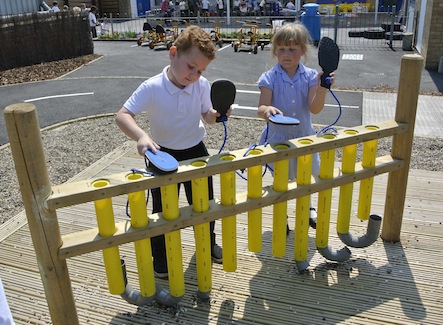
©Saul and The Junk Orchestra
I’m not sure which ones I liked the best! Each instrument had a lovely tone and sound. The flipflopophone in the above photo is an interesting layout of pipes. I love the addition of guttering at the bottom to change the sound slightly.
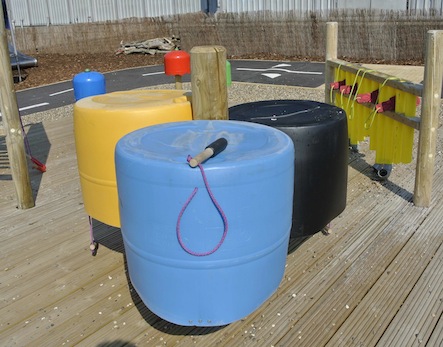
©Saul and The Junk Orchestra
There is something incredibly powerful about drumming outside. The sound gets carried so far. The acoustics tend to suit the tone of any drum. It is a throwback to times when drums were used to communicate messages over long distances. I have a hunch that this precedes Morse Code!
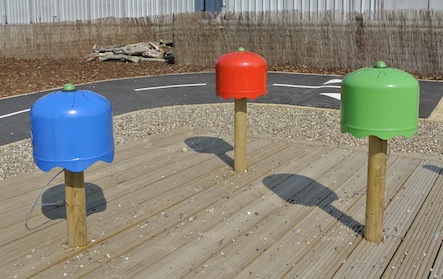
©Saul and The Junk Orchestra
The music mushrooms also have a fabulous tonal range and sound. They are created from gas canisters. Saul has finished them off beautifully – look at the attention to detail of the mushroom below. This is no rough job.
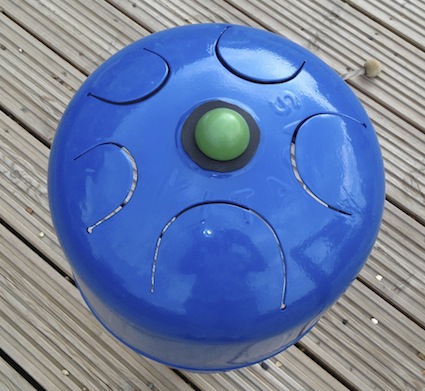
Saul, the Junk Orchestra Man himself, kindly answered some questions about his work…
What got you interested in working with schools to do music?
When I was 21 I got contract with Live Music Now, a charity that offers gigs to those who would not normally experience live music or are excluded from such opportunities. We toured and performed in all sorts of communities. Currently my living combines performance and education.

©Saul and The Junk Orchestra
Why recycled junk?
There is so much of it. And there are some great scrap yards. Every object has a different sound. I like to build and play both tuned and untuned items. The music itself has no cultural boundaries. The only rules being the fundamental basics of how to hold sticks, keep relaxed, get the best sound and enjoy listening to each other and making music together.
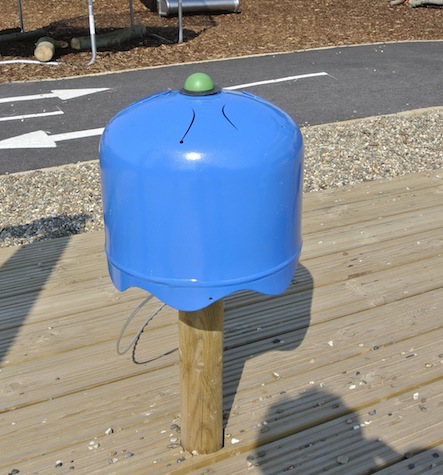
©Saul and The Junk Orchestra
What advice do you give schools looking to install music instruments outside?
- Decide whether you want them part of the everyday play or a dedicated supervised space.
- Everyday play allows instruments to be dotted about. A dedicated space allows for class activities but should have a good combination of instruments.
- Sensory spaces should have a combined sound and landscaped aesthetical features. Consider both when designing.
- If noise is an issue, then ensure any installed instruments are no louder than the normal kids banter at play.
- Buy instruments that sound good and require large physical movements to create the sound. There is no need to spend a fortune.
- Instruments must be easily maintained. Make sure you know what is needed this way before buying.
- If you only want a temporary sound garden, think about building it with the parents and kids. The Junk Orchestra can facilitate this and provide all tools etc.

©Saul and The Junk Orchestra
Many thanks to Saul for his additional information. Also, almost all the photos have been kindly supplied by him for this post. Should you decide to pin any of these photos, please could you ensure that his work and website are acknowledged.
Finally, please go and visit Saul’s website – there are lots of video clips and photos which show just how brilliant this guy and his sound gardens are! He continues to work with primary schools and the range of instruments he offers has been expanded over the years.
This post was originally published in October 2013. I’m not sure if Broadford Primary still have this music space – if not, then this post remains a lovely memory.




















Trackbacks/Pingbacks